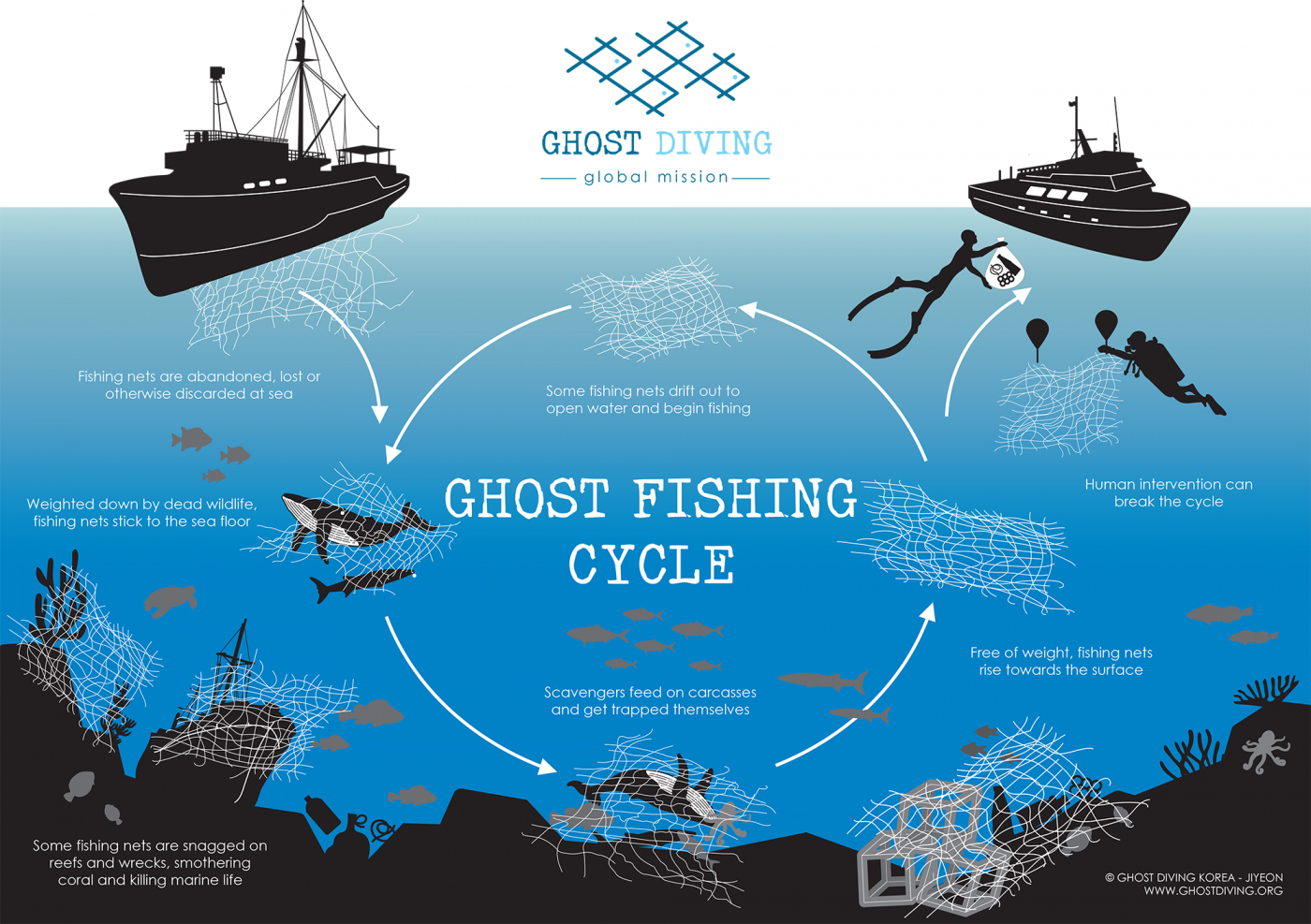About our global mission
Ghost Diving is the largest and most experienced global diving organization focused on the “ghost fishing” phenomenon with a track record in a wide variety of countries and international waters.
Ghost fishing
“Ghost fishing” is what fishing gear does when it has been lost, dumped or abandoned in the seas and oceans. Imagine a fishing net that gets snagged on a reef or a wreck and gets detached from the fishing vessel. Nets, long lines, fish traps or any man-made contraptions, designed to catch fish or marine organisms, are considered capable of ghost fishing when unattended. Without anyone profiting from the catches, they are affecting already depleted commercial fish stocks. Caught fish die and in turn attract scavengers which will get caught in that same net, thus creating a vicious circle.

The issue of “ghost fishing” was first brought to the attention of the world at the 16th Session of the FAO Committee on Fisheries, in April 1985. Following a debate at COFI, the FAO Secretariat published an in-depth study of the problem. “Ghost gear” refers to any fishing gear that has been abandoned, lost or otherwise discarded, and is the most harmful form of marine debris. There are many reasons why fishing gear can be lost or abandoned, including severe weather, snags beneath the surface, conflict with other gear, interaction with other vessels and, rarely, intentional discard when no other options are available.
It is estimated that 640,000 tons of fishing gear gets lost or abandoned in the seas and oceans each year. (UNEP/FAO, 2009). They are among the greatest killers in the oceans, and not only because of their numbers. Literally hundreds of kilometers of nets and lines get lost every year and due to the nature of the materials used to produce these types of gear, they can and will keep fishing for multiple decades, possibly even for several centuries.
